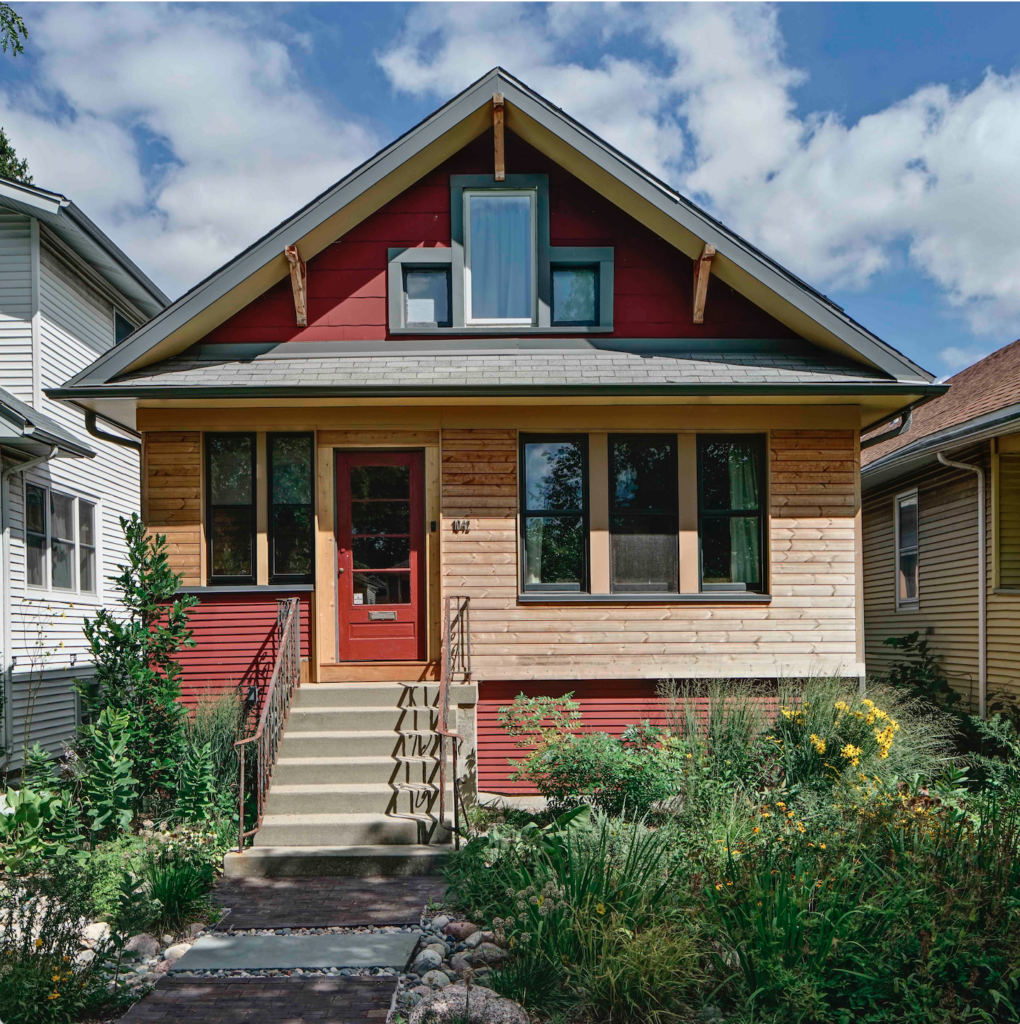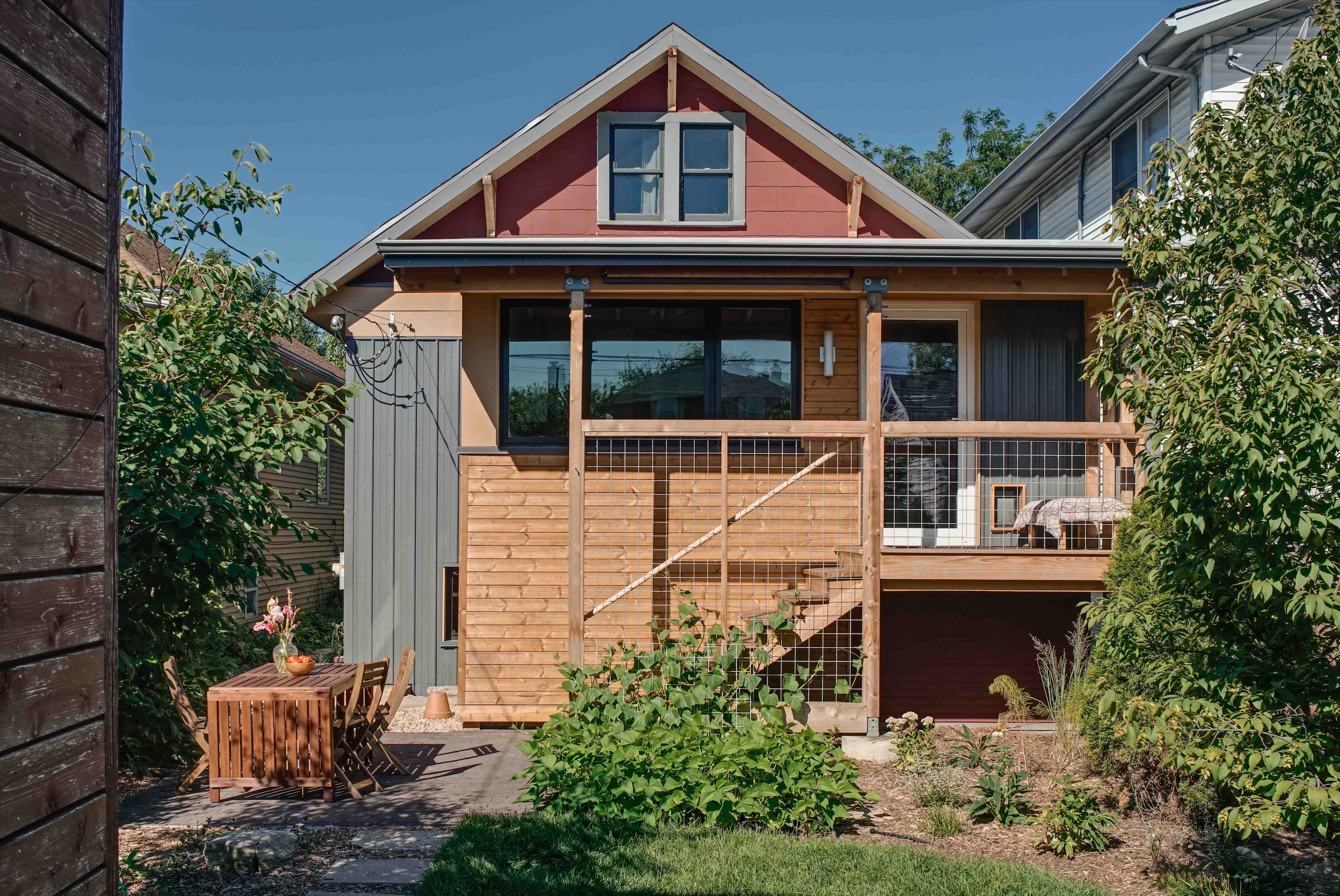VITAL STATS
| Certification Status | Zero Energy Certified |
| Version | 1.0 |
| Location | Oak Park, IL |
| Typology | Existing Building |
| Gross Building Area | 2510 SF |
| Start of Occupancy | December 2021 |
| Occupancy Type | Residential |
| Number of Occupants | 3 |
PROJECT TEAM
| Owner | Tom Bassett-Dilley |
| General Contractor | Biltmore Homes |
| Architect | Tom Bassett-Dilley Architects |
| MEP Engineer | Tom Bassett-Dilley Architects |
| HVAC Contractor | Greg Sutor |
| Builder | Eric Barton |
| Landscape | Twig Landscapes |
RENEWABLE PRODUCTION SYSTEMS INFORMATION
ENERGY PERFORMANCE
| Renewable Type | Solar Electric (PV) |
| Total Renewable Capacity | 8.5 kW |
| Renewable Location | On-site |
PROJECT LEADERSHIP AND STORY OF THE PROJECT
Tom Bassett-Dilley is an architect and bought this 1919 frame bungalow in Oak Park in 2001. In 2006, Tom Bassett-Dilley opened a firm, Tom Bassett-Dilley Architects to pursue sustainability in architecture.
Over the years they did piecemeal “band-aid” solutions to the leaky house but knew that the walls, basement, and previously enclosed porches would be significant projects when they could afford it.
By 2020 Tom Bassett-Dilley committed to the idea of decarbonizing the house and got a construction loan. The general approach included;
- Reducing base loads through insulation and airtightness
- Replace fossil fuel appliances with efficient electric ones (heat pumps, induction cooking);
- Add solar PV.
Using energy modeling (WUFI-Passive), the team tracked the impacts of various efficiency measures, designed the retrofit, including mechanical systems, and worked on the retrofit alongside Eric Barton (Biltmore Homes), a certified Passive House Builder.

DESIGN PROCESS
The walls were the biggest conservation opportunity, through air sealing and insulation. In addition, by choosing cellulose and wood fiberboard, the team was able to minimize upfront carbon impacts. The exterior was stripped to the sheathing and a peel-and-stick air barrier was applied. Then cellulose was injected into the stud cavities from the outside. Continuous wood fiberboard exterior insulation (Steico) was then applied, in addition to the rainscreen and new siding. The Steico fiberboard then went over the Blueskin to provide continuous, negative-carbon insulation.
The basement slab was not a significant energy bonus, but the team needed to fix the cracked, wet, uninsulated mud slab. This repair created a more usable, comfortable space that prevents radon and moisture from diffusing into the house. The retrofit insulation and airtightness reduced the peak heat load from about 100,000BTUh to 22,600BTUh.
The water heater, stove, and furnace were at the end of their service lives therefore this was a great opportunity to switch to electricity and remove the gas line. Furthermore, a balanced energy recovery ventilation system ensures great air quality.
Finally, the electrical panel was upgraded from 100A to 200A to allow for future EV charging, with an Emporia energy monitoring system installed to track usage.

Project website: https://tbdarchitects.com/work/bungalow-decarbonization/

